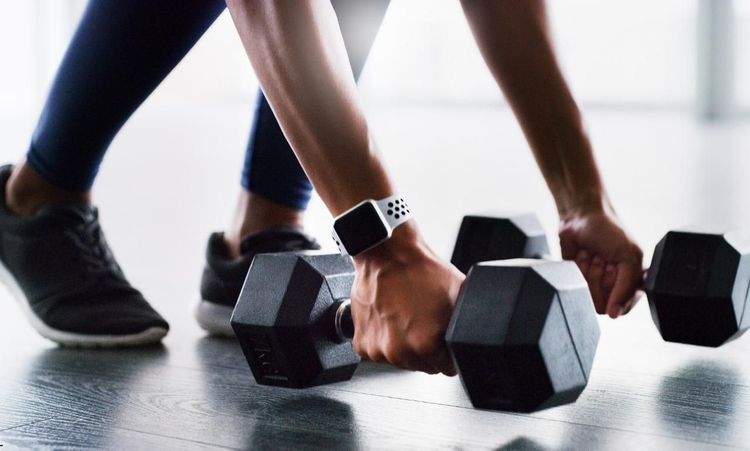Your muscles are screaming. That tough workout left you feeling like you got hit by a truck. Sound familiar? Post-workout recovery doesn't have to be a painful waiting game. Smart recovery strategies can transform how your body bounces back from intense exercise. Recovery isn't just about sitting on the couch. Active recovery techniques help your muscle fibers repair faster. Blood flow increases when you follow proper recovery protocols. Your body needs specific nutrients and rest to rebuild stronger than before. Many people focus solely on workout intensity. They forget that muscle growth happens during recovery, not during exercise. Professional athletes understand this balance. Their success depends on optimizing both training and recovery time. The following five strategies will revolutionize your post-workout routine. Each tip targets different aspects of muscle recovery. Some focus on immediate relief while others support long-term muscle repair and growth.
1. Eat Right for Optimal Recovery
Fuel Your Muscle Repair Process
Proper nutrition kickstarts muscle protein synthesis immediately after exercise. Your muscles crave protein within 30 minutes of finishing your workout. This window maximizes your body's ability to repair damaged muscle tissue. Aim for 20-25 grams of protein from high-quality sources. Lean meats provide essential amino acids your muscles need. Greek yogurt offers both protein and healthy carbs. Protein shakes deliver quick absorption when whole foods aren't convenient. Carbohydrates replenish glycogen stores that fuel your next workout. Brown rice and sweet potatoes restore energy reserves effectively. Your body uses these fuel sources during the recovery process too.
Strategic Nutrient Timing
Elite athletes eat within two hours after intense workouts. This timing supports optimal recovery and muscle growth. A mix of proteins and carbs works better than either alone. Healthy snacks between meals maintain steady nutrient delivery. Protein bars offer convenience for busy schedules. However, whole foods provide better nutritional value when possible. Some people skip post-workout meals thinking it helps weight loss. This approach actually slows muscle recovery and reduces workout effectiveness. Your body needs fuel to repair and rebuild stronger tissue.
2. Hydrate for Enhanced Blood Flow
Water Powers Recovery
Dehydration significantly impairs muscle recovery and athletic performance. Your body loses fluids through sweat during physical activity. Replacing these fluids supports blood circulation and nutrient delivery. Drink 16-20 ounces of water for every pound lost during exercise. Sports drinks help when workouts exceed 60 minutes. Coconut water provides natural electrolytes without artificial additives. Blood vessels need adequate hydration to transport oxygen efficiently. Dehydrated muscles recover slower and feel stiffer longer. Proper fluid replacement prevents muscle cramping and reduces soreness.
Beyond Plain Water
Sports nutrition experts recommend drinking water before feeling thirsty. Thirst indicates you're already becoming dehydrated. Monitor urine color as a hydration indicator throughout the day. Electrolyte balance matters as much as total fluid intake. Sodium and potassium help muscles function properly. These minerals prevent cramping during and after exercise. Alcohol interferes with recovery by promoting dehydration. It also disrupts sleep quality and muscle protein synthesis. Save celebratory drinks for rest days when possible.
3. Warm Up Properly Before Exercise
Prepare Your Body for Action
Dynamic warm-ups reduce risk of injury during workouts. Light activity increases blood flow to working muscles. This preparation helps prevent muscle strain and improves exercise performance. Arm circles and leg swings activate major muscle groups. These movements prepare joints for more intense exercise. Gradually increasing intensity prevents sudden stress on cold muscles. A proper warm-up takes 5-10 minutes before main exercises. This time investment pays dividends in injury prevention. Seasoned athletes never skip this crucial preparation phase.
Movement Patterns Matter
Your warm-up should mirror movements you'll perform during exercise. Runners benefit from light jogging and dynamic stretches. Weightlifters need joint mobility and activation exercises. Body temperature rises during effective warm-ups. You should feel slightly warm but not exhausted. Save your energy for the main workout while still preparing adequately. Cold muscles tear more easily than warm ones. Healthcare providers see fewer injuries in people who warm up consistently. This simple step protects your long-term fitness goals.
4. Cool Down to Reduce Muscle Stiffness
Gradual Recovery Transition
Abrupt exercise cessation can cause blood pooling in extremities. Cool-downs help your heart rate return to normal gradually. This transition reduces dizziness and supports better recovery. Light activity for 5-10 minutes prevents muscle stiffness. Walking or gentle stretching maintains blood circulation. Your muscles need this gradual transition to begin repair processes. Static stretching works best after exercise when muscles are warm. Hold stretches for 15-30 seconds without bouncing. Focus on muscles you used during your workout.
Supporting Long-term Flexibility
Regular cool-downs improve overall flexibility and muscle function. Tight muscles restrict range of motion in future workouts. Maintaining flexibility prevents muscle imbalances that lead to injury. Physical therapists recommend consistent stretching routines. Daily flexibility work compounds over time. Even brief cool-downs provide benefits when done consistently. Some people rush through cool-downs or skip them entirely. This habit increases delayed-onset muscle soreness significantly. Taking time to cool down properly reduces next-day stiffness.
5. Get a Rubdown for Muscle Relaxation
Massage Therapy Benefits
Massage increases blood circulation to sore muscles after exercise. This enhanced blood flow delivers nutrients and removes waste products. Professional massage therapy provides the most comprehensive benefits. Foam rolling offers a self-massage option for daily use. Roll slowly over tight areas for 30-60 seconds. This technique breaks up adhesions in muscle tissue. Massage guns provide targeted muscle relaxation at home. Use moderate pressure for 1-2 minutes per muscle group. These devices help reduce muscle tension between professional sessions.
Recovery Techniques That Work
Heat therapy relaxes muscles and improves circulation. Warm baths or heating pads provide gentle relief. Use heat therapy 24-48 hours after exercise for best results. Cold therapy reduces inflammation immediately after intense workouts. Ice baths or cold showers constrict blood vessels initially. This process reduces swelling in damaged muscle tissue. Alternating hot and cold treatments can enhance recovery. This contrast therapy improves circulation patterns. However, individual responses vary, so experiment carefully.
Conclusion
Recovery determines how quickly you bounce back from challenging workouts. These five strategies work together to optimize your body's natural healing processes. Nutrition fuels repair, hydration supports circulation, and proper warm-up prevents injury. Cool-downs and massage therapy directly address muscle soreness and stiffness. Combining all five approaches creates a comprehensive recovery system. Your fitness level will improve faster with consistent recovery practices. Remember that quality sleep remains crucial for muscle growth. Aim for 7-9 hours per night to support recovery. Rest days allow your body time to adapt and grow stronger. Start implementing one or two strategies immediately. Add others gradually as they become habits. Your future self will thank you for prioritizing recovery alongside training intensity.




